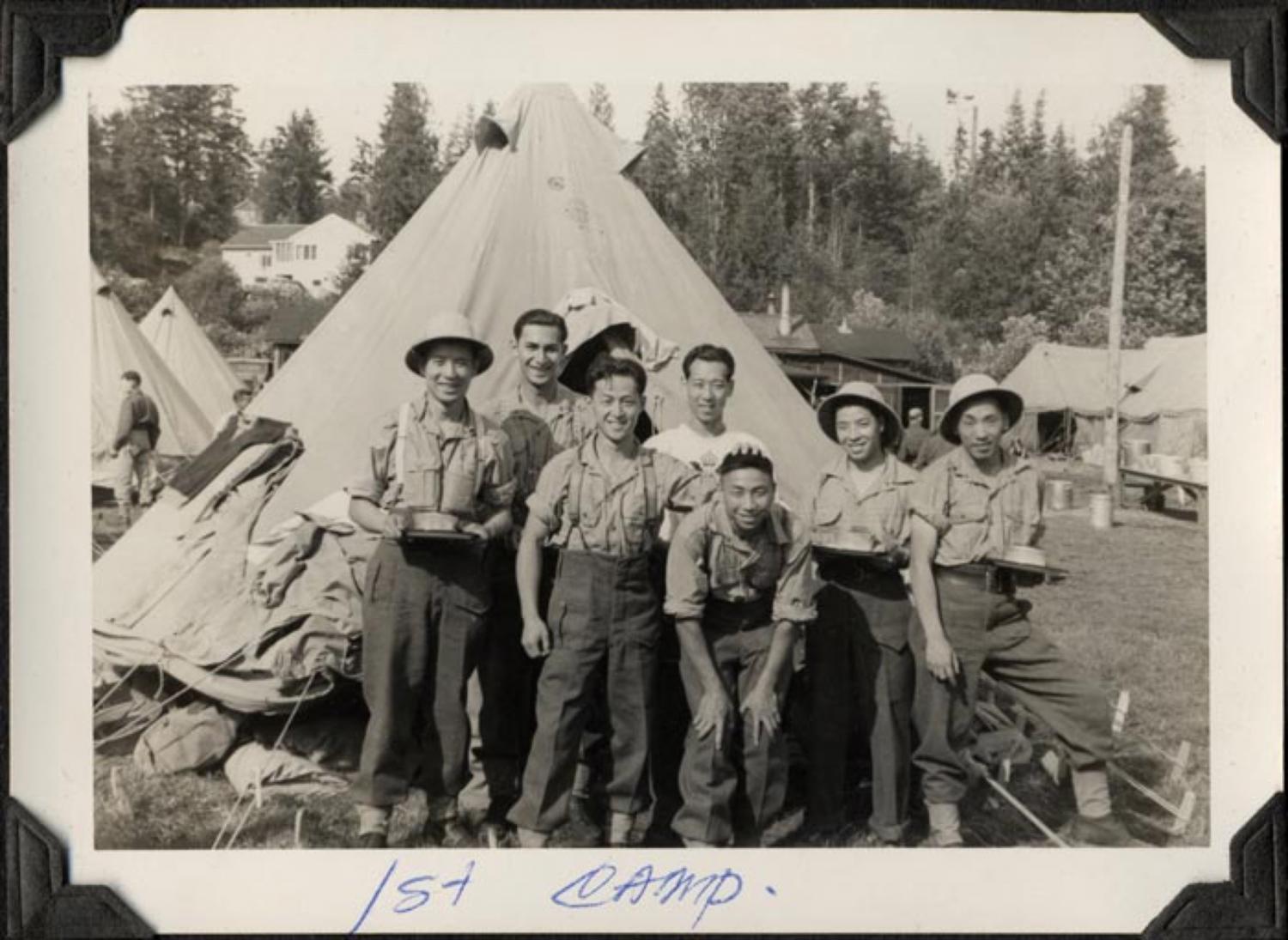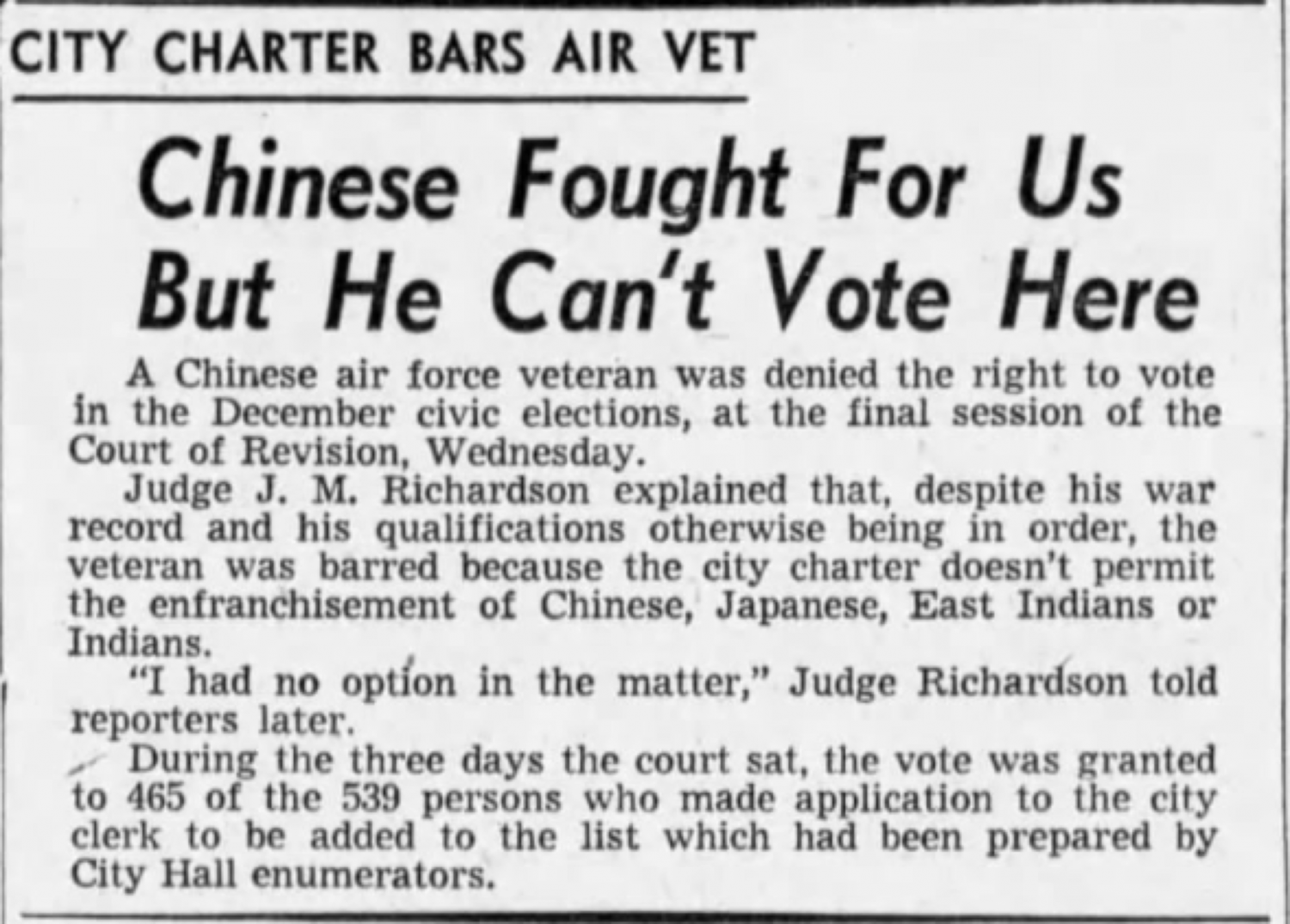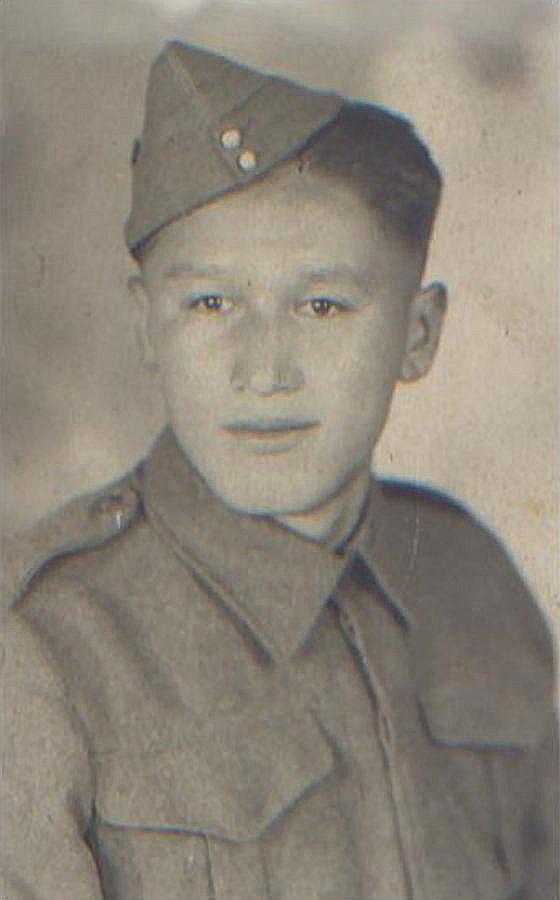Canada’s Racialized Soldiers
Despite discrimination, Chinese, Japanese and Indigenous men fight for Canada in World War Two
Date: 1942
In 1942, Dominic Patrick volunteered for the army. Canada had been fighting in the Second World War for three years, and the young man wanted to do his part. But as a member of the Saik’uz First Nation, based just outside of Vanderhoof in central British Columbia, his options were limited. The federal government had set up a number of hurdles for Indigenous men to enlist. Regardless, Patrick would go on to prove himself in battle. In the small Belgian village of Moerbrugge, he single-handedly forced the surrender of 50 enemy combatants.
While many First Nations saw the fight against fascism as an important one, attitudes towards enlistment differed from community to community. The Okanagan Indian Band, for instance, saw many of their young men and women sign up. But some Indigenous people wouldn’t commit to war unless Britain recognized them as independent nations. After all, how could they fight for a country where they couldn’t even vote? Why enlist when you’re considered a second-class citizen?
No such recognition was granted, but status ‘Indians’ were nevertheless included when Canada implemented conscription to defend the homefront in 1940. It was a move that prompted protest by many Indigenous communities. If they were now serving alongside white Canadians, why, again, could they not enjoy the same rights as them?
They weren’t the only ones asking this question. The government had also long denied Japanese and Chinese Canadians the vote, effectively barring their communities from practicing in professions such as law and medicine.
For B.C.-based Chinese Canadians hoping to serve overseas, options were initially limited. Most were rejected by local recruitment officers because of their race. They’d have to leave the province to find somewhere they could enlist. In the beginning, they couldn’t even join the navy or air force. But once Japan entered the war and action shifted to the Pacific theatre, Canada walked back these restrictions, recognizing the utility of Chinese troops on the battlefields of Asia.
By the end of the war, more than 3,000 Indigenous and 600 Chinese troops had served for Canada. But only 32 Nisei, first-generation Japanese Canadians, had successfully enlisted before Japan bombed Pearl Harbour in late 1941, and the federal government indiscriminately rounded up much of the Japanese Canadian community. Three years later, the government would permit 119 Nisei men to serve when Britain requested their translation services — most leaving their families who continued to languish in internment camps.
The end of the war for racialized veterans didn’t mean the end of the fight. Now, the nature of the battle was different. “When we came home,” Chinese Canadian veteran Gordon Quan later said, “we fought for our rights.”
Thanks in large part to the sacrifice and determination of these servicemen, the Canadian government would change course over the coming years. In 1945, Second World War veterans of Chinese, Japanese, South Asian and Indigenous descent were granted the right to vote in British Columbia. Chinese Canadians could vote in federal elections two years later, the same year that a major anti-Chinese immigration law was repealed. By 1949, the internment of Japanese Canadians had ended. They, too, received franchise upon returning to their homes on the West Coast. Although by that point, some had been forced to move to eastern Canada or were repatriated to Japan.
The broader Indigenous community in B.C. also received the right to vote provincially in 1949. But the road to federal enfranchisement would be longer and more turbulent. The Indian Act was amended in 1951, easing some restrictions on status “Indians” and giving limited powers to Indian Band Councils. It wouldn’t be until 1960, however, that Indigenous people would be allowed to vote in federal elections, a long road finally ending in universal suffrage.
Sources:
- Alexis, Ruby. Okanagan Band Official Veterans.
- Allen, Samantha Wright. "Decorated Aboriginal Soldier Captured Enemy Position Single-Handedly." Prince George Citizen, 9 Nov. 2015, https://www.princegeorgecitizen.com/local-news/decorated-aboriginal-soldier-captured-enemy-position-single-handedly-3720499.
- Allen, Samatha Wright. "First Nations Soldiers an ‘Untold Story.’" Prince George Citizen, 9 Nov. 2015, https://www.princegeorgecitizen.com/local-news/first-nations-soldiers-an-untold-story-3720498.
- "Chinese Canadian History." Chinese Canadian Military Museum Society, 1 May 2021, http://www.ccmms.ca/chinese-canadian-history/.
- Clement, Catherine. "Chinese Canadians of Force 136." The Canadian Encyclopedia, 21 Feb. 2019, https://www.thecanadianencyclopedia.ca/en/article/chinese-canadians-of-force-136.
- Crowe, Paul. A Brief Chronology of Chinese Canadian History. https://www.sfu.ca/chinese-canadian-history/chart_en.html. Accessed 6 May 2021.
- "Indigenous Veterans." Veterans Affairs Canada, 30 Oct. 2020, https://www.veterans.gc.ca/eng/remembrance/history/historical-sheets/indigenous-veterans.
- Lee, Carol F. " The Road to Enfranchisement: Chinese and Japanese in British Columbia." BC Studies, vol. 30, 1976, pp. 44–76.
- ---. "The Road to Enfranchisement: Chinese and Japanese in British Columbia." BC Studies, vol. 30, 1976, pp. 44–76.
- Permanand, Jason, and Steve McCullough. "Dick Patrick: An Indigenous Veteran’s Fight for Inclusion | CMHR." Canadian Museum for Human Rights, https://humanrights.ca/story/dick-patrick-an-indigenous-veterans-fight-for-inclusion. Accessed 6 May 2021.
- Sheffield, R. Scott. "Status Indians and Military Service in the World Wars." Canadian History: Post-Confederation, edited by John Douglas Belshaw, 17 May 2016.
- "Soldiers & Veterans." Province of British Columbia, https://www2.gov.bc.ca/gov/content/governments/multiculturalism-anti-racism/chinese-legacy-bc/history/soldiers-veterans. Accessed 6 May 2021.
- Sunahara, Ann. "Japanese Canadians." The Canadian Encyclopedia, 31 Jan. 2011, https://www.thecanadianencyclopedia.ca/en/article/japanese-canadians.





